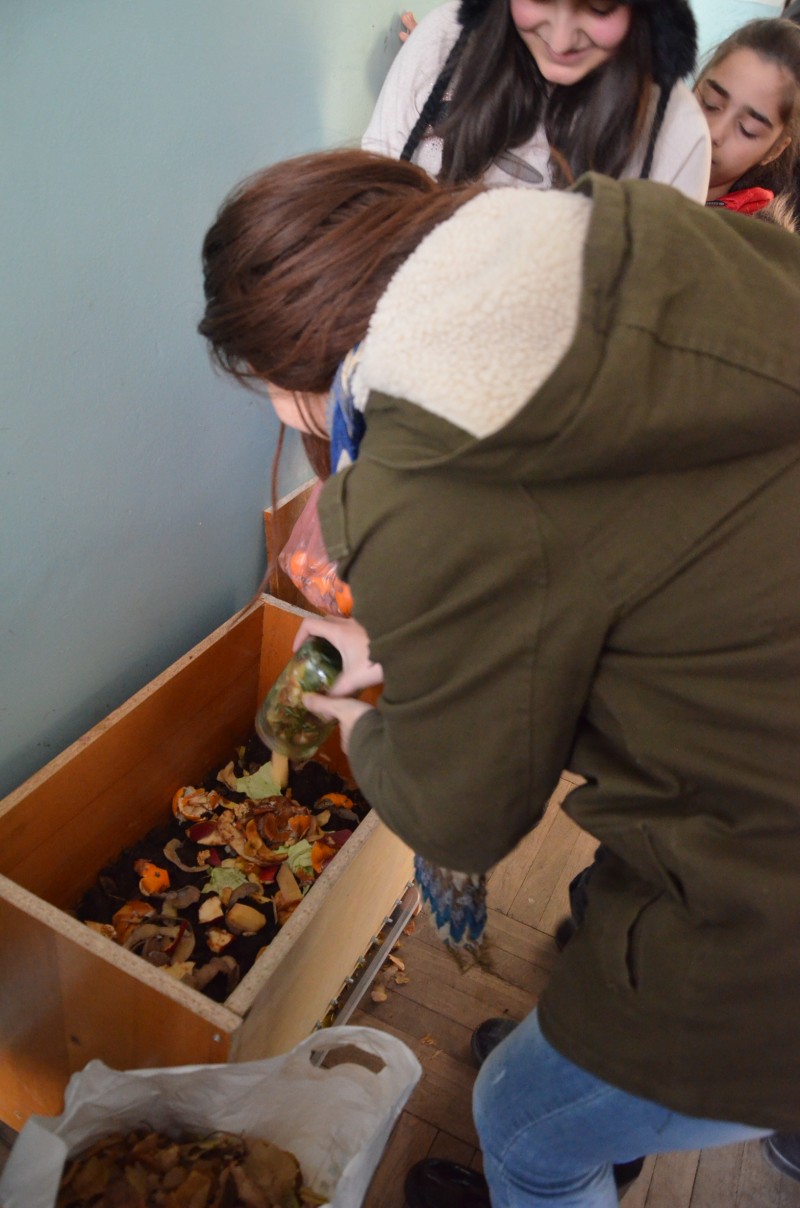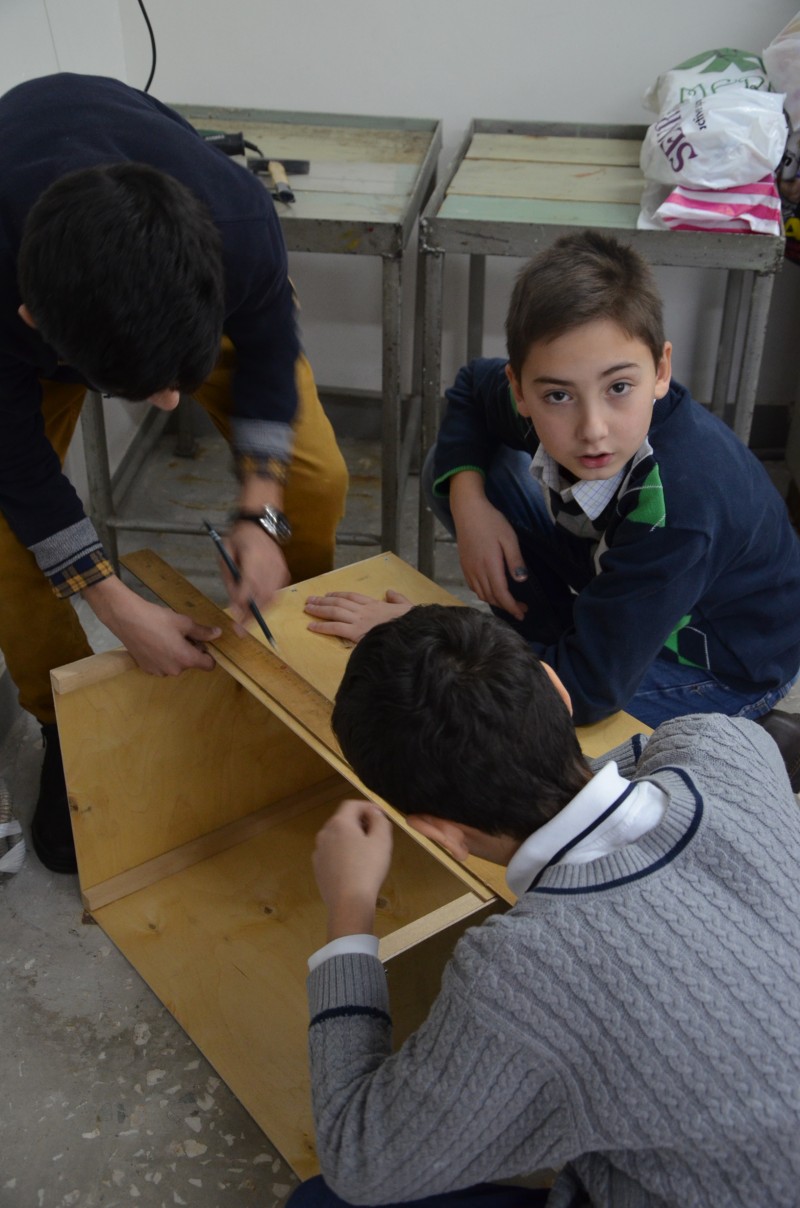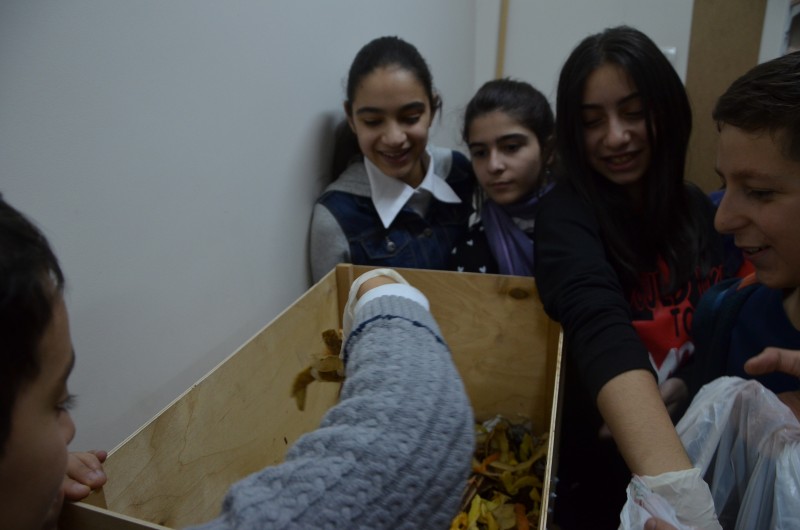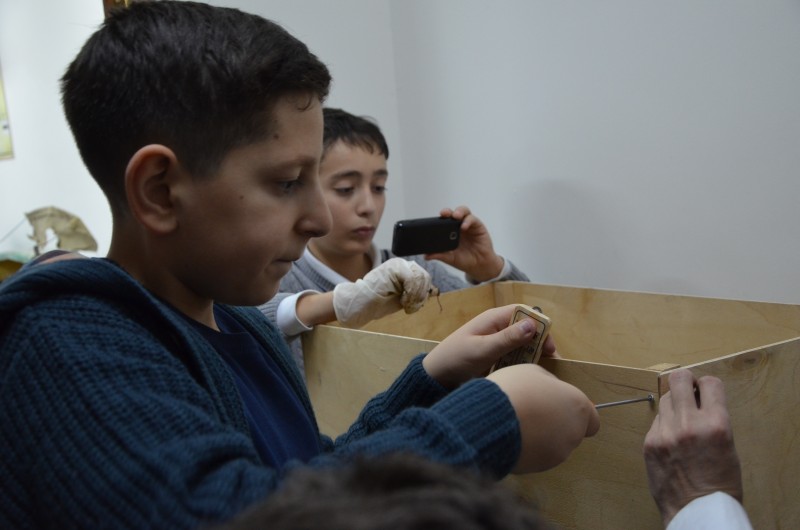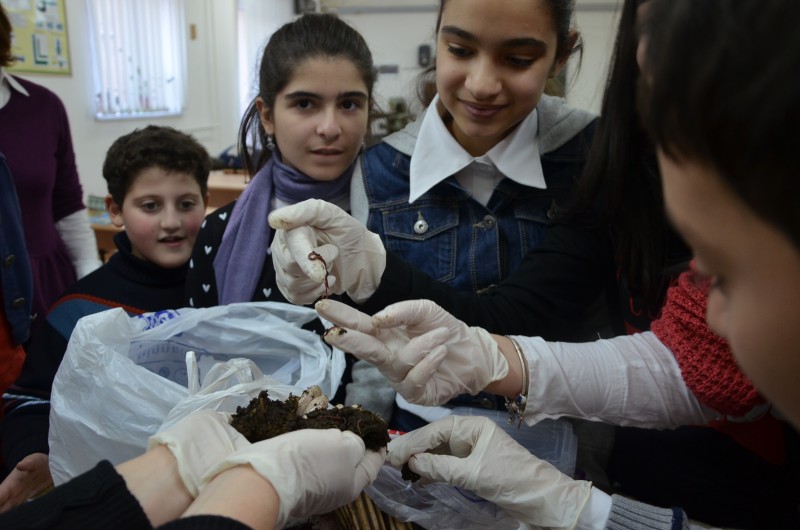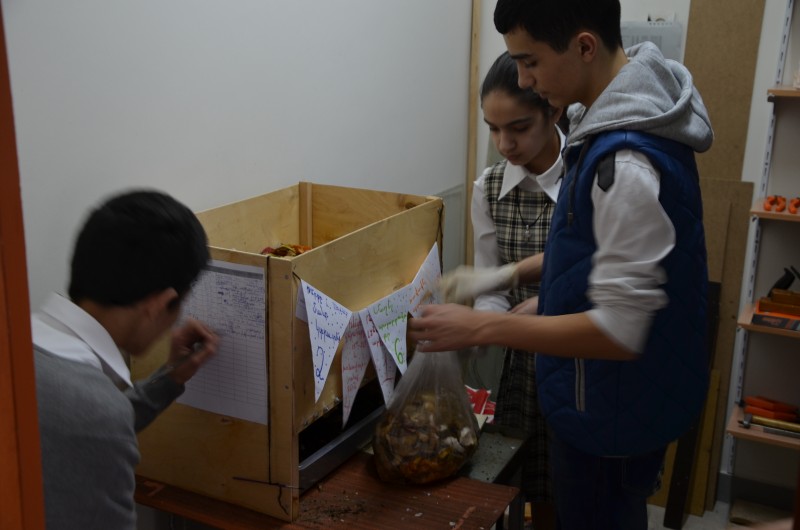
Edible Schoolyard Pilots in Yerevan — AUA Acopian Center for the Environment and Yerevan Municipality Collaborate
3 min readYEREVAN, Armenia – In late 2015, the AUA Acopian Center for the Environment initiated its Edible Schoolyards pilot project in two Yerevan middle and high schools (Yerevan Basic School #56 named after Stepan Zoryan and Secondary School #87). The program, whose title translates into Armenian as The Nutrient Cycle in Schoolyards, is implemented in collaboration with Yerevan Municipality and gives students hands-on experience with the entire cycle of growing food, preparing healthy meals, and transforming food waste into soil again through vermicomposting. Vermicomposting is the use of worms to process food waste. This pilot program is an addition to a school-outreach program, Natural Environment and I, that the AUA Acopian Center has been implementing in Yerevan middle and high schools for the past 5 years and in the past year in collaboration with Yerevan Municipality.
“We are very excited about the new addition to our school outreach program,” says Marine Asatryan, Environmental Education and Youth Projects Coordinator at AUA Acopian Center for the Environment. “While growing food and following the nutrient cycle in schoolyards has been part of the educational experience of many schools in the US and Europe, it is a novel idea in Armenia. It lets students learn not only from textbooks, but also real-life observations,” she says.
The program involves a total of 15 students from grades 8-12 in each of the two pilot schools. These schools and students had gone through last year’s the Natural Environment and I program, a key factor in the high level of commitment and enthusiasm from participants. The groups meet 30-45 minutes after school twice a week to monitor, discuss, and make adjustments to the vermicomposting bins. Just this week, they started adding strawberry and tomato seedlings in the soil generated by the vermicomposting.
The program takes a holistic approach to student experience. “We’re not just implementing a gardening initiative,” says Armine Sargsyan, AUA Acopian Center expert and educator involved in the project, “but we’re also starting off with vermicomposting to show that there is a problem with waste and that, at least for food waste, there’s a solution. We feed this waste to worms and have them produce natural organic fertilizer that’s very beneficial for the soil and very good for the food that comes from that soil.” In the process, children learn the delicate balance of nutrients and physical environment needed for the worms to survive and thrive so that they can do their important work of biodegradation. “There is a bit of soil science, chemistry, plant and animal biology, and more,” says Sarsgyan.
The pilot encourages student-to-student and student-to-teacher collaboration. “This is radically different from the traditional classes that students experience in a typical Armenian school,” says Asatryan. “The upper grade students get a chance to show their younger peers how the project works and show the results of the project. Students of all ages are expected to feel that they are responsible for the worms and the entire process. They are involved in continuously monitoring the process of vermicomposting and conducting experiments to improve results,” says Asatryan.
Currently, two teachers—a school lab technician and a biology teacher—are involved in the Edible Schoolyards pilots. The teachers support AUA Acopian Center’s Asatryan and Sargsyan in delivering the vermicomposting course. “Though they receive no additional compensation for the extra work they do, the teachers are deeply interested and vested in the process. These teachers’ high level of motivation, energy and enthusiasm no doubt motivates the students as well,” Asatryan says.
After the pilot phase is over, the AUA Acopian Center will assess the experience and look into the possibility of expanding the initiative to more schools. Asatryan and Sargsyan are also considering compiling a teacher manual that includes lesson plans that will make it possible for the initiative to expand independently of AUA Acopian Center throughout schools in Armenia. “Currently, all the resources about how to do vermicomposting are in English or in another language. It’s definitely better to have them in Armenian,” Sargsyan says. “We want to make the project sustainable, so it can be continued at the schools where it’s taught. Also we hope to be able to help spread the idea to schools throughout the country,” Sargsyan adds. A video will also be produced to document the project and provide additional guidance to educators, so that the project can be independently replicated.
Asatryan points out, “When Armenian students hear that in the US students did this or that, they may think that it’s not attainable for them. Next year, we hope to show our Armenian school experience instead of the US experience. When they see students just like them succeeding, it is bound to have an empowering effect.”
The AUA Acopian Center for the Environment (AUA ACE) is a research center of the American University of Armenia. AUA ACE promotes the protection and restoration of the natural environment through research, education, and community outreach. AUA ACE’s focus areas include sustainable natural resource management, biodiversity and conservation, greening the built environment, clean energy and energy efficiency, as well as information technology and the environment.
Founded in 1991, the American University of Armenia (AUA) is a private, independent university located in Yerevan, Armenia and affiliated with the University of California. AUA provides a US-style education in Armenia and the region, offering high-quality, graduate and undergraduate studies, encouraging civic engagement, and promoting public service and democratic values.

